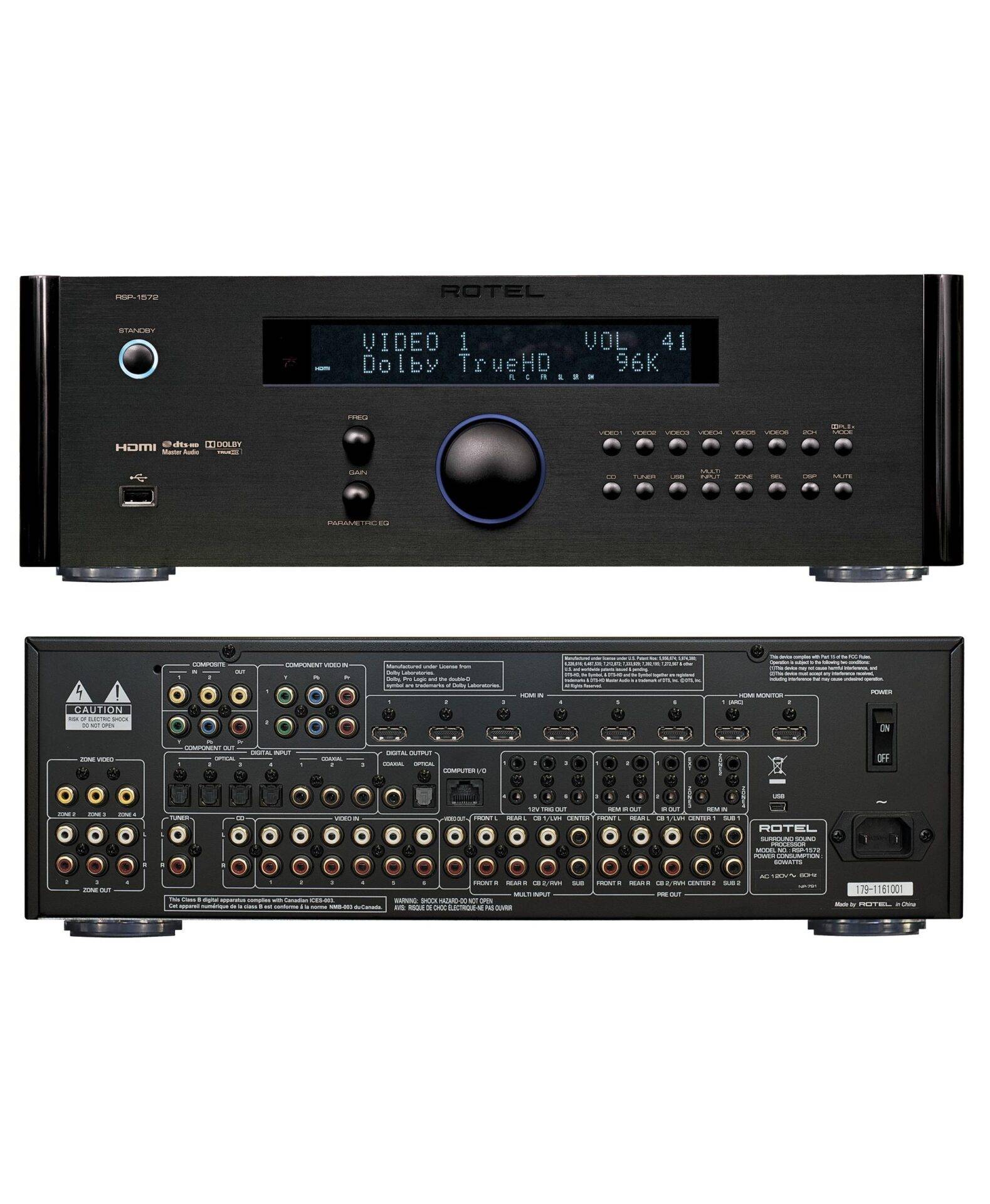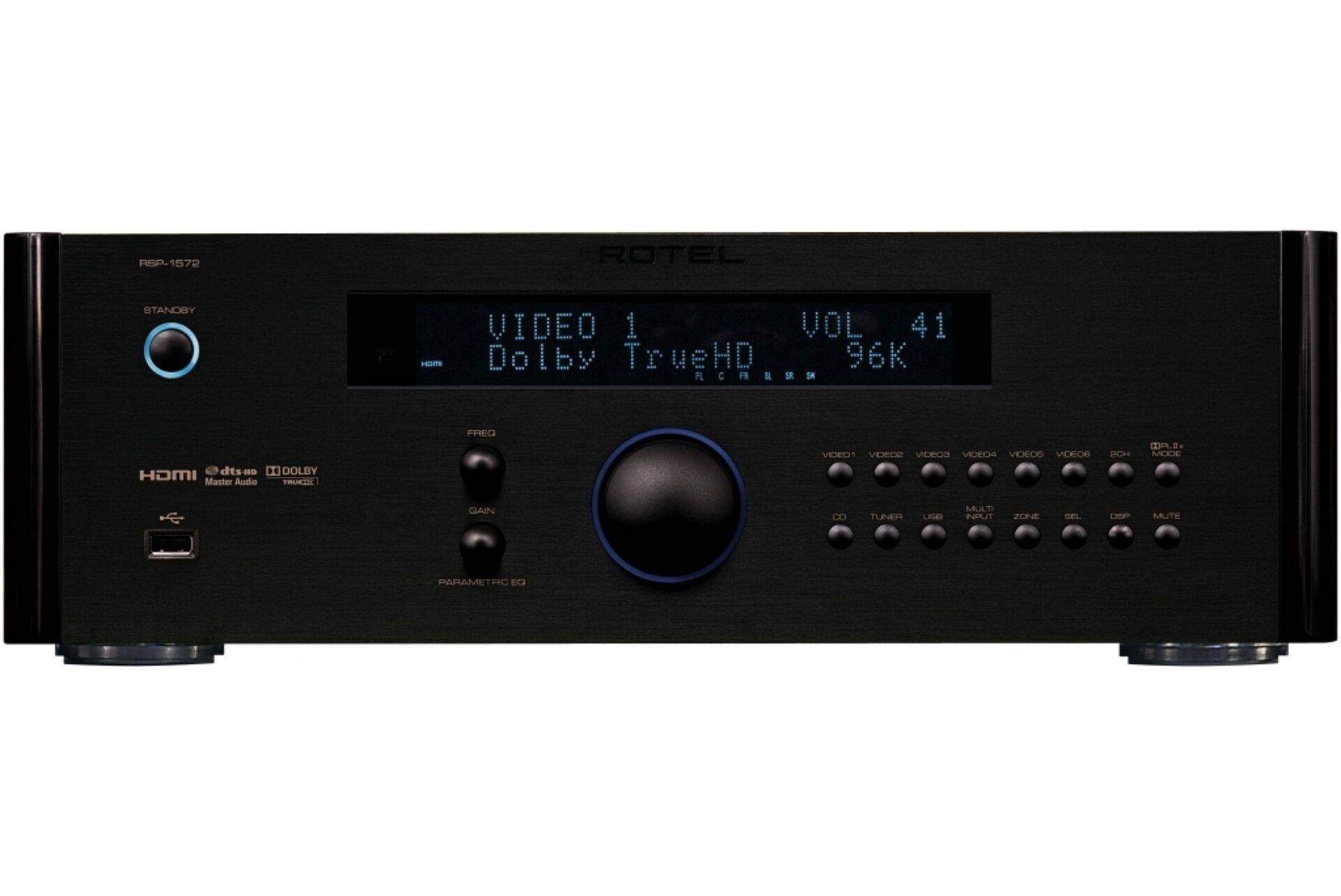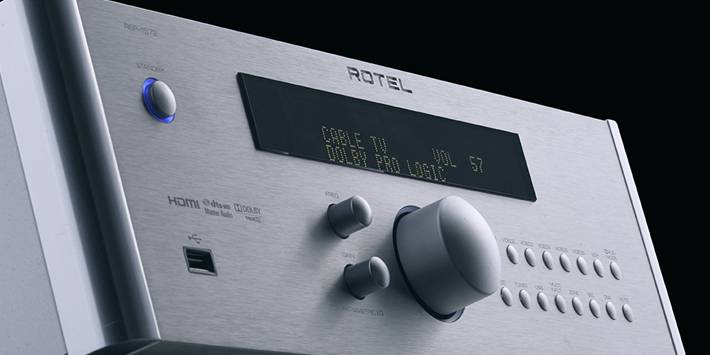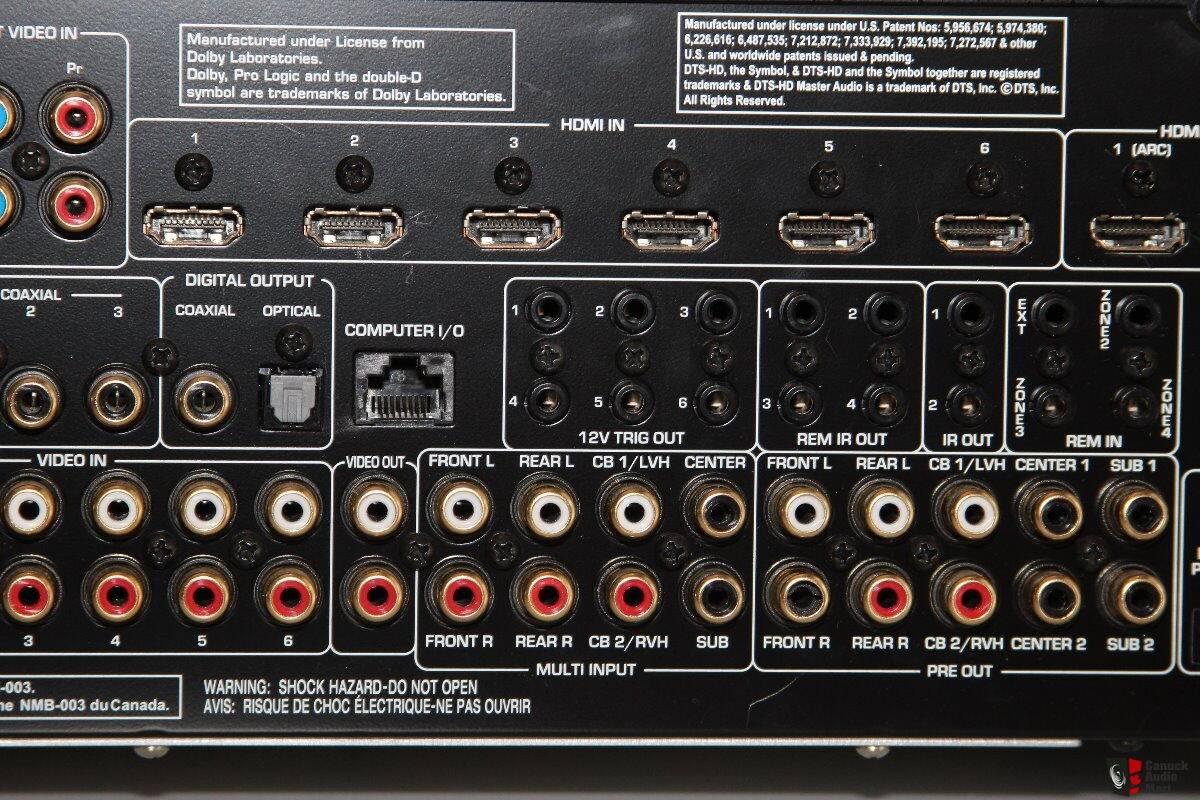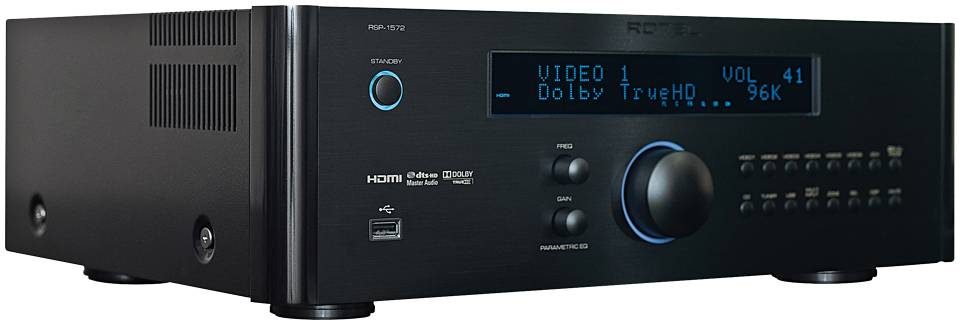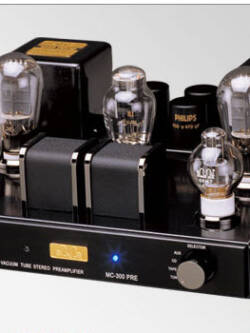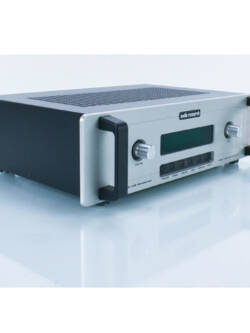Rotel RSP-1572 Surround Sound Preamp/Processor
Original price was: R68,000.00.R28,000.00Current price is: R28,000.00.
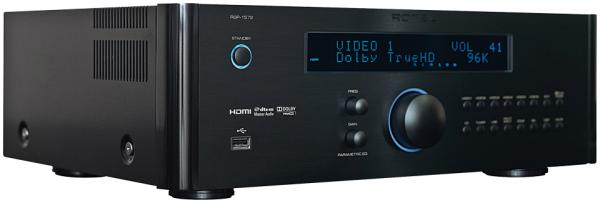
As home theater has become ever more digitally sophisticated, A/V separate components, specifically preamp-processors, have become thinner on the ground as many smaller, separates-oriented manufacturers drop away. While A/V receivers today steal much of the limelight (and dollars), separates soldier on, mostly from the major-brand makers, each of which offers a flagship pre-pro. So too do a handful of low-volume, high-end makers offering very expensive models.
Rotel is one of a very few to occupy the middle ground with a separates line dedicated to both performance and value, and priced for people who might still have to think about it. The RSP-1572, the firm’s most recent pre-pro, is the company’s marquee A/V component.
Performance
I don’t have a great deal to say about the RSP-1572’s intrinsic sound quality, because it was essentially transparent — a Very Good Thing, and in fact the highest praise for any audio component. Stereo music sounded as good as the source material. In the case of a high-rez title like Donald Fagen’s Morph the Cat (from a 96/24 HDtracks.com download), this was superb. As Fagen has done for some 30 years now, he pretty much sets the standard for squeaky-clean studio production on Morph the Cat, and the Rotel presented these meticulously arranged and obsessively recorded tracks in all their glory. A cut like “Mary Shut the Garden Door” was stereo audio at its best: transparent and deep, with pronounced details like delicate cymbal attacks, and a woody bass-strings “bite” that I only hear from properly reproduced high-rez files.
Irritatingly, however, the Rotel RSP-1572’s HDMI-format digital-audio output muted on even the briefest no-signal condition, and then required a half-second or so to unmute. The result: Nearly all CDs, and even my streaming music, were shorn of the opening half-second or so of almost every track, even when allowed simply to play through — a bit of a deal-breaker in my estimation. (This applied only to signals arriving via HDMI; both optical and coaxial digital inputs did not exhibit the cutoff.) Rotel told me it’s aware of the syndrome, and the solution it proposes to concerned owners is to set up a second input from their disc player (or other source), via optical or coaxial instead of HDMI for music listening. Sensible enough, I suppose, but it also reintroduces one bit of complication that HDMI was supposed to eliminate. The Rotel’s surround-music options include, a bit oddly, onboard decoding for high-rez PCM signals delivered by the nearly defunct DVD-Audio format, but not for the still-kicking, if admittedly somewhat moribund, SACD one. Listening to multichannel SACDs requires that you set up your player to first decode the DSD bitstream and convert it to PCM, or to use a multicable analog connection.
The RSP-1572 does incorporate Dolby PLIIz, whose “height” dimension, though conceived for film sound, can do some interesting things for surround-music reproduction. The most valuable, to my ear, ?is to contribute a greater sense of scale on large-?hall recordings. The thrilling way that hall sound “bloomed” on the hammer blows in the “Death of Tybalt” scene from Prokofiev’s Romeo and Juliet (from an old Telarc CD) was literally hair-raising when heard with PLIIz engaged.
Less thrilling were Rotel’s four proprietary DSP-surround modes. Named, with unusual restraint, DSP-1 through -4, these simulate progressively “larger” spaces but were without exception so clangorous and boingy-sounding as to be utterly useless. Rotel would have done better to leave them off.
Results with high-rez movie soundtracks were pretty spectacular. Both the music layer and the surround-intensive effects in the DTS-HD Master Audio soundtrack of the Planet of the Apes (the 2001, Marky Mark edition) Blu-ray are first-rate, and the Rotel delivered both with full force. Scenes like the pod crash in Chapter 4 ripped through the viewing area with complete clarity and real impact.
The Rotel includes a “Cinema EQ” setting (essentially, a THX Re-EQ-like treble down-tilt) that can be invoked by input on the setup menu but not directly via the remote. This is a feature I applaud, though Planet was the rare disc that I found nicely balanced without it.
The RSP-1572 also has a 10-band fully parametric equalizer that can be set to operate either globally? or individually by speaker channel — a tweaker’s delight. This one can be accessed directly from the remote, via a small pop-up display, to modify frequency and gain.
The Rotel can play audio from a USB storage device jacked into the front-panel port, and a supplied Bluetooth dongle enables wireless audio streaming to the same destination. The Bluetooth hookup worked fine from my iPhone 5. You can also physically connect an iPod/Phone here, and get basic onscreen display of track and artist info, and remote skip/pause control. This worked as advertised with both an iPhone 5 and a 3GS (and with an iPod Classic), as long as I plugged the iDevice into the port before selecting the preamp’s “USB” input via remote or front-panel keys.
Rotel confines the RSP-1572’s video processing?to transcoding incoming analog video to HDMI, and scaling it up to 1080p resolution. Video upscaled from 480i to 1080i/p by the late-generation Faroudja DCDi chip set looked fine across all my standard video test-disc tracks, including film-pulldown tests that have caused some earlier DCDi chips to stumble.
Ergonomics
Since the Rotel has next to no onscreen operations other than setup, its ease of use lives and dies by the supplied remote, at least for those who will employ it rather than some other, third-party whole-system control option. Here, the RSP-1572 scores a “gentleman’s C”: The controller is generously laid out and well marked, but it lacks any illumination other than glow-in-the-dark cursor and volume keys, and the horizontal placement of the latter way up in the top-right corner felt quite odd to my hand.
But the remote’s main failing is that it is a dedicated, single-component remote with no programmability or learning; a remote included with any but the cheapest of today’s A/V receivers will outdo it. (The controller does incorporate keys to manage a Rotel CD player.) That said, most or perhaps all those of a mind to contemplate a $2,200 A/V centerpiece (plus amplifiers) will likely have other plans for command’n’control.
Otherwise, I have few complaints regarding? the Rotel’s operation. The RSP-1572 does have an onscreen text “pop-up” to show audio and video signal composition, selected surround mode, and volume-control changes, which I think is a great feature. You can also directly access channel-level trims by channel, also with pop-ups, from the remote, which I value even more highly. Unfortunately, all these pop-ups are fixed as small, white text positioned lower-center, where they were sometimes difficult ?to decipher, and sometimes obscured altogether by crawlers or subtitles. The Rotel also demonstrated? an annoying habit of muting audio for a few seconds every time the bitstream switched from Dolby Digital 5.1 to 2.0 or back, which happens often when broad- cast/cable TV switches between commercials and programming. (I watched a lot of live sports via the Rotel.) I got used to this quickly enough, but I can’t say I enjoyed it.
Bottom Line
That HDMI muting issue aside, my time with the RSP-1572 was mostly smooth sailing. It’s impossible to fault the Rotel pre-pro’s basic A/V performance, and its elegant simplicity should harmonize nicely with a certain type of buyer’s system plans. If you’re a performance-first, features-second type who logs as many hours on music playback as on TV and movies, you may very well number among them.
Setup
Unboxing the RSP-1572 is a satisfying experience, thanks to classy packaging materials and the reassuring heft of the component itself. I placed the unit atop my rack, plugged in my HDMI cables from sources and TV, and hooked up RCA interconnects to my ?7 x 150-watt power amplifier and SVS PC 12-Plus subwoofer. The Rotel has lots of 3D-ready version 1.4 HDMI inputs — six — and dual HDMI outputs. It also provides no fewer than 10 preamp outputs: the usual 7.1, plus “Center 2” and “Subwoofer 2” jacks, both of which simply parallel their primaries.
Rotel does not include any automatic setup, calibration, or equalization features, so setup is purely a manual procedure. A simple textual onscreen menu guides the process, which was straightforward and accurate, though there are quite a few options, including “CB/VH” outputs that can be configured either?for front-height speakers (for Dolby PLIIz playback) or for center-back use in a 6/7.1-channel layout. I went with the front-height option. The RSP-1572 also has an “Advanced” setup page where you can assign a different speaker-crossover arrangement for each speaker/ pair for Dolby, DTS, and stereo signals — an excellent refinement.
Rotel home theater preamp/processor a nice upgrade
By Jim Bray
March 14, 2013
Rotel’s latest 15 series home theater surround sound processor offers excellent performance, video processing, and even wireless connectivity.
The $2199 RSP-1572 is a definite improvement over the previous model, the RSP-1570, though perhaps not enough to warrant an upgrade from the earlier model if you have one already. If you have an older head unit, however, this one might just turn your crank nicely.
Rotel made its name by building audio products that blow the doors off the big box store stuff, but aren’t priced so ridiculously into the stratosphere that you can buy a car cheaper.
I don’t mean to demean either the big box store stuff or the really esoteric equipment, mind you; I’ve had very rewarding listening experiences at both ends of the price spectrum. But, like many self-styled audiophiles, I prefer equipment that’s appreciably better than the mainstream “equipment in a box” stuff, though not so highfalutin’ that it forces me to squander my children’s inheritance (I have a car for that!).
This predilection means that products like those from Rotel are right up my alley. In fact, the company’s equipment has populated my audio racks for many years, where I not only enjoy them hugely but use them as reference equipment as well – a job Rotel fills very nicely, with a “just right” blend of quality, performance and price that would even please Goldilocks.
Rotel may not stuff as many features into its equipment as some of the competition – there’s no “Audyssey-like” automatic speaker setup capability here, for example – but what you do get offers pretty well everything you really need, including test tones you can use to balance the system yourself, which only takes a few minutes and is actually kind of fun (you’ll need a sound pressure level meter, though).
Since the RSP-1572 is just a pre/pro “head unit,” you’ll need an amplifier as well, to power your speakers. I used a couple of configurations with the 1572, including Rotel’s lovely RMB-1575 five channel Class D amplifier (reviewed, with the RSP-1572’s predecessor, here), an amp that knocks out a healthy 250 watts per channel. Mostly, however, I used my older Rotel Class D amps (two RB-1092 stereo amps and the mono RB-1091, which not only boast 500 watts per channel but which also have the audacity to back it up.
You’ll have to figure the cost of your amp(s) into your budget, of course, in which case you’re obviously looking at an investment of a few grand, not including speakers and “source” (BD, cable box, etc.), but if you can afford and justify that expenditure, it’s money spent well.
It’s been nearly four years since I reviewed the RSP-1572’s predecessor, an eternity in the technology biz, so I was quite interested to see what Rotel has done to stay competitive. And since I liked the “old” RSP-1570 a lot, the new kid had a big footprint to fill in the audio stack.
Fortunately, Rotel took a kind of Porsche-like approach to the new model, meaning that, like the new 911, the RSP-1572 is an evolutionary step forward that doesn’t throw out the old baby just to add new bath water.
The preamp handles the full 7.1 channels of audio, though I only run 5.1 in my configurations. Feed it a bitstream signal from your media player and it’ll decode Dolby TrueHD, DTS HD Master Audio and all the rest of those formats – lossless and lossy – including DVD-Audio. Its dual 32 bit DSP’s and 24Bit/192k digital-to-analog converters are indeed up to the task at hand, though if you want to play SACD’s in their high resolution glory you’ll have to decode the signal in the player before sending the audio to the Rotel – which is no big deal.
The new, front-mounted USB input lets you plug your music player into the machine directly, and that means you can use the Rotel’s formidable decoding and processing prowess with the tunes stored on your device.
It works well, but I prefer the Bluetooth approach, which is accomplished by plugging the wireless dongle (which is included) into the USB slot. Firing up the Bluetooth doesn’t fire up my music player automatically, like it does with my Bose SoundDock, but once the tunes are playing you can control the playback from the Rotel’s remote. It’s a great feature, wonderfully convenient, and my phone’s music library sounded great through the Rotel system.
The RSP-1572 also sports advanced bass management and a new, 10 band parametric equalizer that I used to help tweak the sound better to the room conditions (and to good effect, too). The EQ is operated via the on-screen menu system, and you might want to read the manual before messing with it.
Despite the Rotel’s formidable processing abilities, I generally feed the audio directly to its analog inputs in everyday use, a move that basically bypasses all the digital magic and instead sends the raw signal directly from the back panel to the volume control (where it belongs!) and from there to the amplifier outputs. This can also be used as a nice bit of anti-obsolescence, in that if some new 7.1 audio standard comes along a couple of years down the road (like the lossless formats did when Blu-ray was introduced), the Rotel will still play it as long as you can decode the new format at the source (the player or whatever) and output the audio to the Rotel via the analog connections.
This isn’t a new feature, mind you, but it sure could be a handy one.
Rotel has embraced the HDMI 1.4 standard for the RSP-1572, so it now passes 3D signals through to your screen. You can pass six of them through thanks to that number of HDMI inputs on the back panel. There are two outputs as well, one of which can handle the audio return channel. There are analog video outputs, too, but I daresay most people will use HDMI.
You don’t have to use the Rotel’s video processing, but if you do you’ll be using technology from Faroudja, which is an excellent place to start. It works well if you have a less than perfect video signal you want to improve without hamstringing the overall image quality. I prefer sending the raw video right through unprocessed, but to each his own.
The front panel display shows stuff like the source you’re using, volume, DSP mode, etc. The on-screen display, which is easy to understand and use, also comes on when you adjust the volume, which rubbed me the wrong way, though it’s hardly a deal breaker.
I don’t really care for the new remote, however. The old one wasn’t anything special, but it worked well and I was used to it. The new one also works well, but they’ve changed the button arrangement too much and the volume control – which is what I use most often on the remote – is small and hard to find in the dark even though it does glow in the dark a bit.
The RSP-1572 can also send signals to three other zones in the house, if you choose to.
Right now, the RSP-1572 is the best multi-channel preamp/processor Rotel offers and it’s definitely a fine one. It could be argued that it may be a tad Spartan compared with some units out there, but it has plenty of capabilities anyway, all of the important stuff you really need. It’s also built very well and performs beautifully.
I’ve had some severe handshaking problems while using its HDMI inputs and outputs, but they aren’t the Rotel’s fault (and they occur even when I take the Rotel out of the loop). Nope, handshaking hassles are a bonus we consumers get to live with every day thanks to Hollywood insisting on an intrusive anti-piracy system that, judging by what I’ve been told is available on torrent download sites, does nothing except annoy and insult the consumers who pay the bill legitimately.
But I digress.
The RSP-1572 is an excellent product. As much as I like it, however – and I like it very much – I remember a Rotel pre/pro from a few years ago that I liked even better (except that HD has rendered it mostly out of date). It was called the RSP-1098, and was a “whole nuther level” of performance and quality above the RSP-1572 – and priced like it, too! It was truly a glorious piece of equipment and I hope Rotel sees fit to make an updated and upgraded version available in North America sometime soon. That would really be something!
But they should keep the RSP-1572 on the market as well. It’s a fine unit that fits the bill nicely for those who can’t or won’t make that next step up the high end audio/video ladder.
Description
The RSP-1572’s advanced design builds upon a progression of outstanding home theater processors that have received critical acclaim around the globe. The RSP-1572 features important new technologies such as HDMI 1.4 with 3D capability. It offers six HDMI inputs and two HDMI outputs, with one HDMI output having ARC capability (Audio Return Channel). The ARC in HDMI 1.4 enables a TV, via a single HDMI cable, to send audio data “upstream” to an A/V receiver or surround audio controller, increasing user flexibility and eliminating the need for any separate S/PDIF audio connections.
A USB front input for iPod®/iPhone®/iPad® or other MP3 player use is provided. The USB input provides a digital connection so that the RSP-1572’s high quality 24-bit/192kHz DACs provide the crucial decoding. Additionally, the preamp/processor incorporates Bluetooth operation via a wireless dongle that is included, allowing streaming audio playback from tablets, phones, computers or other Bluetooth enabled devices. To provide even more audio versatility, the preamplifier includes a 10 band parametric EQ and advanced bass management.
Video signals are handled by the latest generation Faroudja Torina FLI30336 Cortez Advanced Platform offering the most robust set of Faroudja DCDi Cinema® video processing technologies available. Torino combines unique analog and digital processing to drastically reduce video noise without sacrificing image quality and sharpness. It also offers next-generation Faroudja RealColor® color management technologies. The Faroudja Torino also includes an integrated 3D video decoder. The RSP-1572 is designed to properly handle 3D video signals, whether from Blu-ray players or set-top boxes. The RSP-1572 supports all traditional audio and video processing features with Dolby TrueHD, Dolby Digital Plus, Dolby Pro Logic IIz, DTS HD Master Audio, DTS HD and more. Dual 32-bit DSP’s and 24-bit/192kHz audio DACs ensure high sound quality and performance.
Multizone outputs provide composite video and analog audio for up to 3 zones. Zone control includes source selection, volume and on/off. The RSP-1572 front panel display shows current source, volume and DSP mode. The OSD is available for customer setup using the HDMI, Component or Composite main video outputs.
Most important however is the performance of the RSP-1572. Rotel has paid very careful attention to all of the board level components, circuit design and power supply execution to ensure that the RSP-1572 is the very best preamp/processor available yet from this highly respected audio company.
